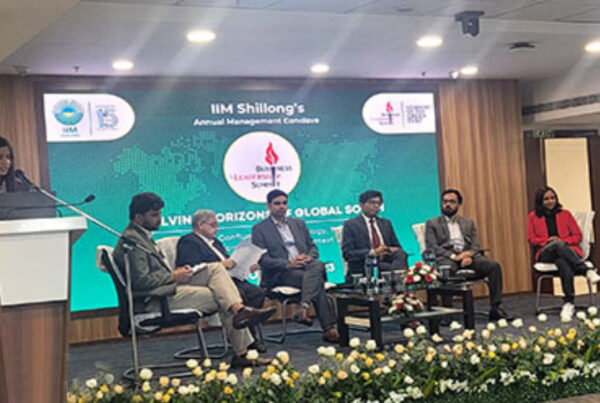The global fashion industry is at a cusp, as it continues to develop. Several factors are driving the transformation. The ripple effects of the pandemic, of course, are the key reason, coupled with disruptive innovations, and growing consciousness among people for eco-friendly products.
Focus on sustainability has been stronger than ever before. According to a report by BRC, a trade organization, published in 2021 and cited in Forbes, retailers had cut down their carbon emissions by almost half since 2005.
In the light of the growing consciousness for environment-friendly products and practices, here are a few important trends:
Spotlight on eco-friendly/organic fibers
The shift to eco fibers is mainly attributed to the growing concerns about synthetic fibers that have a harmful effect on the environment. Using the latest technologies to develop eco-fiber textiles with environment-friendly properties (such as antimicrobial and hypoallergenic qualities, insulation, resistance to UV rays, high breathability and capacity for absorption)would increase their significance in the clothing market.
Organic fibers such as fruit, hemp and vegetable fibers are increasingly gaining traction in the garments, tannery and textile industries.
Growth in composites and packaging markets is paving the way for the use of bio-based fibers and renewable materials. These include plant-based and animal protein-based natural fibers such as cotton, jute, coir, flax, and hemp; and wool and silk, respectively.
Natural fibers have low density, are renewable, abundantly available, and pose lower risks to health. Plus, they are environment-friendly since they reduce respiratory and skin allergies, and improve energy consumption.
Smart textiles
Intelligent fabrics (that are a mix of textiles and technology) have created a buzz in the market.
The market for e-textiles and smart clothing is expected to record a high CAGR between 2022 to 2028. Of this, the active smart segment is expected to have garnered the biggest market share in 2021.
E-textiles are embedded with electrical items, from lights to sensors. Smart clothing materials, on the other hand, are fabrics with far more advanced properties than regular fabrics because of extensive application of technology. As the name suggests, smart fabrics largely come under wearables, whereas e-textiles can be used for decoration too.
E-textiles and smart clothes are largely used for monitoring the vitals of people engaged in hazardous occupations, such as in nuclear and radioactive industries, to track the movement of soldiers, i.e., for national security reasons, to keep a check on health-related stats such as pulse/heart rate, blood pressure in patients, and for collection of data during sports activities.
Due to these reasons, despite the high cost of these fabrics, consumer preference is growing.
Sustainable and smart packaging
The fashion industry is increasingly becoming conscious of the need to adopt environment-friendly practices, such as reducing packaging waste. It is important to work toward effective solutions, considering that packaging accounts for nearly one-third of the plastic produced globally. Examples of green packaging products and materials include FSC-certified papers and cardboards, recycled content PE poly bags, and zero-plastic hangers.
Given that it is imperative for a fashion firm to work toward reducing the consumption of plastic or non-recycled plastic in packaging, the solutions probably lie in adopting technology and digitization of production and supply chain management.
With the help of technology, the much-needed data can be captured in real-time to help in large-scale implementation of recycling and re-use. For instance, supplementing protective packaging with smart technology will pave the way for raw material certification, waste transparency, and generation of actionable insights on recycling, and more.
Use of technology in clothing
The global apparel industry, according to estimates provided by Statista, is expected to rake in USD1.5 trillion in revenue in 2022 and record a CAGR of 4.92% annually over 2022–27. Considering the size of the industry, therefore, the scope for application of technology in processes and operations is immense. Some factors driving this are wage-related concerns as the industry largely employs manual labor, awareness regarding pollution and the rising need to address the requirements of next-gen consumers amid the high level of connectivity today. For instance, with social media facilitating instant access to latest trends, customizable fashion is fast replacing mass-made clothing.
With the growing penetration of digitalization and with the digital world rapidly becoming a reality, it makes more business sense for fashion/apparel retailers to adopt the latest technologies, such as AI, IoT, or blockchain across functions and operations.
This will ensure relevance of the brand to consumers, facilitate traceability for customers and customization as per requirement, and collection of data in real-time for drawing incisive insights on a range of aspects.
Benefits of technology application: Customer perspective
Augmented and virtual reality (AR/VR)
Customers today like to try on products before buying to ensure the purchase is worth it. AR and VR facilitate just that. Both technologies combine the physical and digital worlds to give the most satisfying results.
AR/VR tools enable customers to try out new outfits; facilitate 3D rendering of existing patterns and designs to ensure accuracy of fitting and size; enable editing of designs and review of changes, minimizing errors and cutting down wastage in sampling; help in building e-wardrobes, etc.
The technology, therefore, helps brands to improve customer experience, create clothing with the right/accurate fitting, and capture data for improved forecasting of trends. Together, AR and VR enable brands to offer hyper-personalized services, which is a highly effective way to attract and retain customers.
Novel fabrics
Deemed as the next significant step in fashion, novel fabrics are both sustainable and unique.
Some examples include lab-grown leather produced without inflicting any harm on animals (currently, Modern Meadows, a US-based startup is engaged in this space); or highly strong spider silk (Bolt Threads, EntoGenetics).
Other innovations in this domain include advancements in 3D-printing technology to change the color of 3D-printed objects; or developing color-changing fabrics, etc.
Use of blockchain for traceability
Blockchain is highly effective in ensuring transparency and efficiency in supply chain operations. The technology not just facilitates connectivity of all component units of the supply chain but also ensures secure exchange of information and data.
With the help of blockchain, customers can understand the entire lifecycle of a product from the point of procurement of raw materials to manufacturing to the final product reaching the shelf.
Therefore, it can be used to track inventory of apparel, understand bottlenecks, maintain records across stages of production, prevent the movement of fake or counterfeits products, and avoid theft of goods.
Sustainability
In the fashion industry, the traditional format of fashion is rapidly being replaced by fast fashion. Nowadays, designs reach stores quickly, and fashion majors churn out over 50 collections a year to keep pace with demand.
This has an enormous impact on the environment. The fast pace of production means massive wastage of apparels with harmful effect on health and the environment. The fashion industry reportedly accounts for nearly 10% of CO2 emissions globally, besides generating a significant percentage of industrial wastewater.
This is prompting consumers and fashion brands to switch to slow fashion, marked by sustainable production practices, including the creation of fashion lines that cut across seasons. Other practices include purchase of second-hand clothes, with brands encouraging customers to be thrifty in their purchases; and use of dead-stock fabrics for making clothing.
That consumers appreciate this is reflected in the growing popularity of environment-conscious brands, or the growth in the second-hand apparel market, which, according to online thrift store ThredUp, is estimated to reach USD51 billion by 2023.
Sustainability is, therefore, a key factor influencing business decisions today.
To conclude
Consumers in the fashion industry are increasingly getting environment-conscious. They are willing to pay more for products that are produced ethically without harming the environment or wildlife in any form. Along with this, digitalization is another growing trend consuming the fashion industry, much like any other sector.
These two factors have made it imperative for the fashion industry to adopt technology and adapt itself to the changing environment. The pace of change is fast, and only those fashion brands that align their strategies with the new requirements and respect the sentiment of customers will survive and thrive.
For more information on our research services and consumer insights, please connect with Suyog Keluskar, Director at Avalon Global Research.




